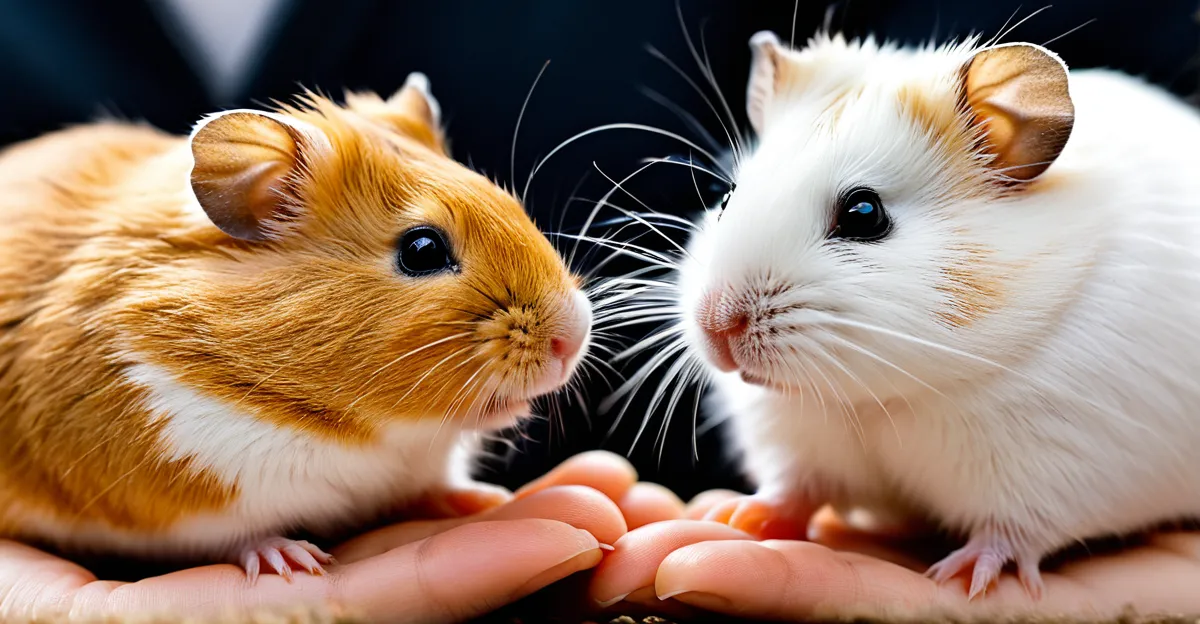Step-by-step methods for socializing pet hamsters
Socializing a hamster requires patience and understanding of hamster socialization steps. Begin with gradual acclimation to human presence. Place the hamster’s cage in a quiet room where it can observe without feeling threatened. Spend a few minutes daily near the cage, speaking softly to let the hamster recognize and feel comfortable with your presence. Avoid sudden movements or loud noises.
Next, move to proper techniques for initial handling. Start by offering treats through the cage bars to create positive associations. When the hamster appears relaxed, gently offer your hand inside the cage. Allow the hamster to sniff and climb onto your palm voluntarily. Avoid grabbing or forcing them, as this can induce stress and undermine trust.
Also read : What should you know about the behavior of pet degus?
Building trust is key for friendly hamster behavior. Develop routine interactions such as daily short play sessions outside the cage or feeding by hand, ensuring the hamster associates these moments with positive experiences. Steady, gentle contact over weeks will help your hamster become friendlier and more willing to interact, making taming pet hamsters an achievable and rewarding process.
Recommended interactions and daily bonding activities
Building a strong bond with your hamster thrives on consistent gentle contact. Start with hamster bonding by offering treats through the cage bars or from your hand. This encourages trust and helps your pet associate your presence with positive experiences. Incorporate regular handling exercises by slowly scooping your hamster up with both hands, supporting its body securely to minimize stress.
Also read : What Makes Owning Unique UK Pets So Rewarding?
Safe, supervised playtime outside the cage allows your hamster to explore and engage with you directly. Use a playpen or a designated hamster-proofed area. During these sessions, interactive play with tunnels, wheels, or chew toys not only stimulates your hamster mentally but also promotes social behavior.
Integrate short daily sessions of interactive play to reinforce your connection. Gentle petting after your hamster shows comfort helps in establishing routine and calmness. Remember, patience is key; hamsters can be timid at first, so adjusting your approach according to your hamster’s reactions maximizes the bonding process.
By consistently applying these methods, you nurture a positive environment where your hamster feels safe, engaged, and connected.
Recognizing stress and behavioral cues in hamsters
Watching closely for hamster stress signs is essential for their well-being. Hamsters often communicate through subtle changes in body language, offering clear indicators of comfort or fear. For example, a relaxed hamster may groom itself calmly or explore its surroundings, whereas a stressed hamster might freeze, show rapid breathing, or try to hide.
Understanding these hamster stress signs helps in differentiating fear from typical curiosity. If your hamster is consistently avoiding interaction or exhibiting teeth chattering, this is a strong sign of distress. Recognizing such cues enables you to provide responsive care tailored to their needs.
Common stress triggers include changes in cage environment, loud noises, or sudden handling without warning. Observing your hamster’s reactions to these elements can guide you in creating a safer and more comfortable habitat.
Adjusting the socialization pace is crucial; if a hamster appears overwhelmed, reducing interaction time or offering more hiding spots can alleviate stress. Gradually increasing contact while monitoring hamster body language ensures that bonding occurs without causing harm. This sensitive approach is key to nurturing trust and a happy pet.
Creating an optimal environment for socialization
When setting up a hamster habitat, creating a safe and comfortable socialization environment is crucial. Start by choosing an ideal cage placement. Position the cage in a quiet, stable area away from direct sunlight, loud noises, or heavy foot traffic. These factors can cause stress, making taming difficult.
Next, design your space to be easily accessible. This encourages frequent, gentle interactions that foster trust. A stable environment reduces fear, allowing the hamster to explore your hand or the taming space confidently.
Minimizing environmental stressors is key. Avoid sudden movements or loud sounds near the cage, as hamsters are sensitive to disruptions. Additionally, ensure the safe taming spaces within the habitat have hiding spots and soft bedding, so your hamster feels secure.
By combining appropriate cage placement, accessibility, and a calm atmosphere, you create a welcoming environment that supports successful taming and socialization. This approach allows hamsters to gradually build confidence, making handling a positive experience for both you and your pet.
Timeline and progress markers in hamster socialization
Socializing a hamster is a process that requires patience and careful observation of taming milestones. Typically, the socializing timeline begins with a few days of allowing the hamster to acclimate to its new environment, followed by gradual interaction steps. Early stages involve gentle presence near the cage, progressing to hand-feeding treats, and eventually to holding the hamster.
Indicators of friendly and tame behavior include the hamster approaching your hand voluntarily, grooming while being handled, and relaxed body language. These behaviors signal that trust is being established, reflecting successful gradual progress. However, it’s important to remember that each hamster is unique. Some may reach these milestones in a week or two, while others need several weeks, so adjusting expectations by individual hamster temperament is crucial.
Maintaining this adaptable approach ensures a more positive experience for both pet and owner. Regularly observing your hamster’s specific reactions helps tailor interactions, creating a customized socializing timeline that respects the animal’s pace and comfort. Emphasizing steady progress over rushing results will yield the most rewarding taming journey.
Safety measures and common mistakes to avoid
When aiming for safe hamster handling, hygiene is paramount. Always practice thorough sanitization before and after interacting with your hamster to prevent transmission of germs. Washing your hands removes odors that might alarm your pet, fostering a calmer environment.
Avoid sudden movements and loud noises, as hamsters have sensitive hearing and can become easily startled. This can cause stress or defensive behavior, undermining trust and socialization efforts. Gradually introducing your presence helps build a positive bond.
Common socialization mistakes include forcing interaction or grabbing the hamster quickly. If a hamster feels threatened, it might bite or try to escape. Instead, offer your hand slowly and let the hamster initiate contact. Watch for signs of discomfort like freezing or squeaking, and adjust your approach accordingly.
Risk prevention also involves recognizing handling errors, such as squeezing too tightly or dropping the hamster. Hamsters are delicate creatures; a fall can lead to serious injury. Use a secure grip—supporting their body — and keep close to a surface when handling.
Following these guidelines ensures both your safety and your hamster’s well-being. Mastery of safe hamster handling creates an enjoyable caregiving experience for all.
Expert advice and frequently asked questions
Navigating hamster care can be tricky, but hamster expert tips provide invaluable guidance for both new and seasoned owners. When dealing with stubborn or aggressive hamsters, experts recommend gentle, consistent handling to build trust. Gradually increasing interaction time while offering treats helps even the most challenging hamsters become friendlier.
One common challenge is managing a hamster that bites. The best solution is patience and observing body language—if your pet shows signs of stress, pause interaction to avoid escalation. Establishing a calm environment reduces anxiety and encourages tameness.
Frequently asked questions often center on diet, cage cleaning, and social behavior. For instance, owners ask, “How often should I clean the hamster’s cage?” Experts suggest a thorough cleaning once a week, spot-cleaning daily to maintain hygiene without causing stress.
Troubleshooting issues such as lethargy or excessive biting involves immediate consultation with a veterinarian, as these could indicate health problems rather than behavior issues. Accessing expert advice ensures that you respond appropriately to your hamster’s needs, enhancing both well-being and the bond between owner and pet.


